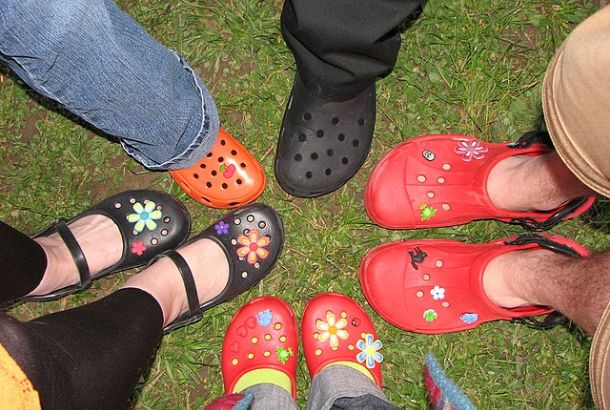How shopping sustainably could save our planet
By ameliadunn2

Have you ever wondered what effect you could be having on our planet whilst shopping for a new outfit? Have you ever thought that, by buying into the latest fashion fads, you could be contributing to climate change? If the answer is no, then you are not alone.
The fashion industry has a dirty little secret. It has recently come to light that it is the second largest polluter in the world, beaten only by the oil industry. The fashion industry is responsible for a whopping 10% of all global gas emissions. But it is something we have never discussed even though there is an increasing interest in our culture to recycle and eat less meat in order to save our planet. Yet, there is no narrative or education on the pollutive nature of fast fashion.
Big brands are beginning to see the problems with fast fashion and are adapting the way they manufacture clothing under the name of ‘eco-fashion’. Eco or sustainable fashion is the latest progression in the growing philosophy of sustainability. It takes a cyclical approach to fashion by providing clothing and materials that are supported indefinitely through the recycling of materials, as well as the manufacturing of materials that are decomposable.
H&M is one of the high-street brands at the frontline of the eco-fashion. Under their ‘Conscious Fashion’ campaign, H&M are aiming to use 100% recycled or sustainably sourced materials by 2030. In an interview, H&M CEO Karl-Johan Persson discussed his desire for a ‘circular approach’ to fashion and production. The invention of this campaign follows the revelation that the fast fashion industry will not be able to sustain production at a continued rate. This is due decreasing levels of resources and population growth. Already, H&M has reduced emissions by 21% and are leading the charge in reducing the damage caused by the fashion industry.
Fashion’s hidden secret of wastage and a large carbon footprint has finally emerged from the dark. The damage is caused by the excessive amounts of untreated toxic waste that is dumped into the rivers, flowing subsequently into our seas and oceans. Fish and other sea creatures ingest the toxic waste and microfibres from manmade materials. Therefore, our own food chain now contains plastics and toxic waste. Changing trends and Fashion Week drive the fashion industry, which overhauls its stock multiple times a year. As a result of this, the industry overhauls massive amounts of un-recycled or un-donated waste. Instead, the garments decompose – a process that can take up to two-hundred years.
So, how can we help?
If you protect your planet through lifestyle choices like recycling or veganism, sustainable shopping should be attractive to you. As the old adage says, one person’s trash is another’s treasure. Shopping in charity shops like Oxfam or vintage shopping at Manchester’s Affleck’s can help reduce the extensive waste produced from the fashion industry by renewing old clothing and styles. Businesses like this are helping to minimise fashion’s footprint by ensuring that clothes do not get incinerated or dumped.
We are living in a material world, but seeking out certain sustainable fabrics can reduce the amount of plastics in our oceans. Raw and natural fabrics do not eject toxicity during the manufacturing process. By buying and wearing fabrics with organic fibres like linen, organic cotton and hemp you are choosing sustainable materials. These materials are fully decomposable and recyclable. You can shop in H&M’s Conscious fashion section where you can source these materials at a high-street price.
You can also assemble a DIY wardrobe. Turning an old worn garment into something else can really revitalise your wardrobe. Instead of hitting up the high street, have a go at your own wardrobe renaissance to create something original and sustainable.
It seems the fashion industry has become a disposable one with the average person spending around £1,000 on clothing per year. By taking baby steps towards a sustainable wardrobe, we can help to reduce the emissions released by the fashion industry. Clearly, it is important to think of the longevity of this campaign and to think about the future of fashion. For years, the dark side of fashion has been shoved under the rug and left to fester. Now, it is time to address the problem and take a step towards sustainable shopping.







